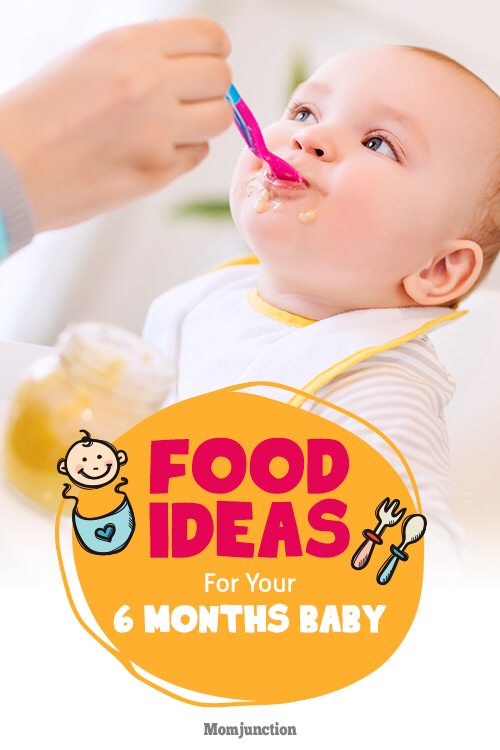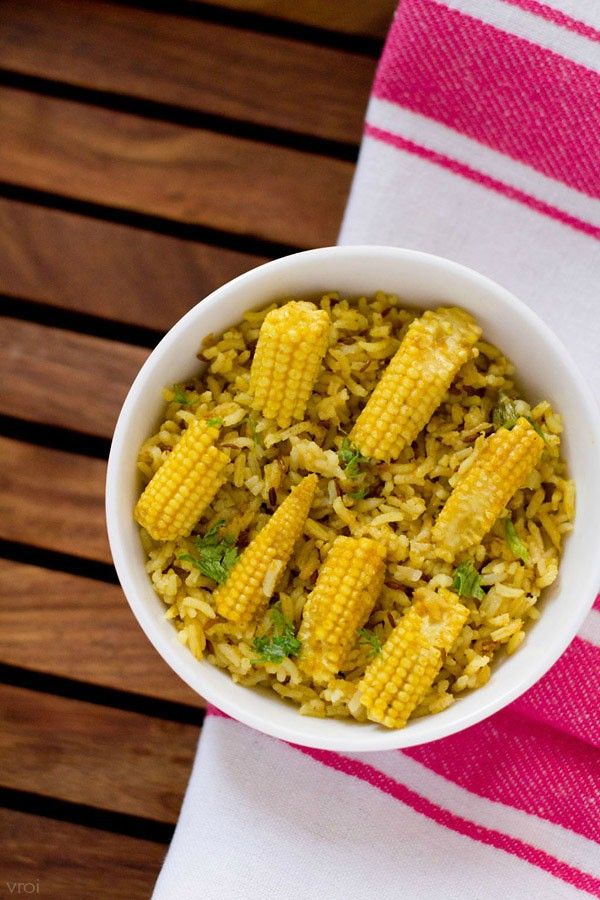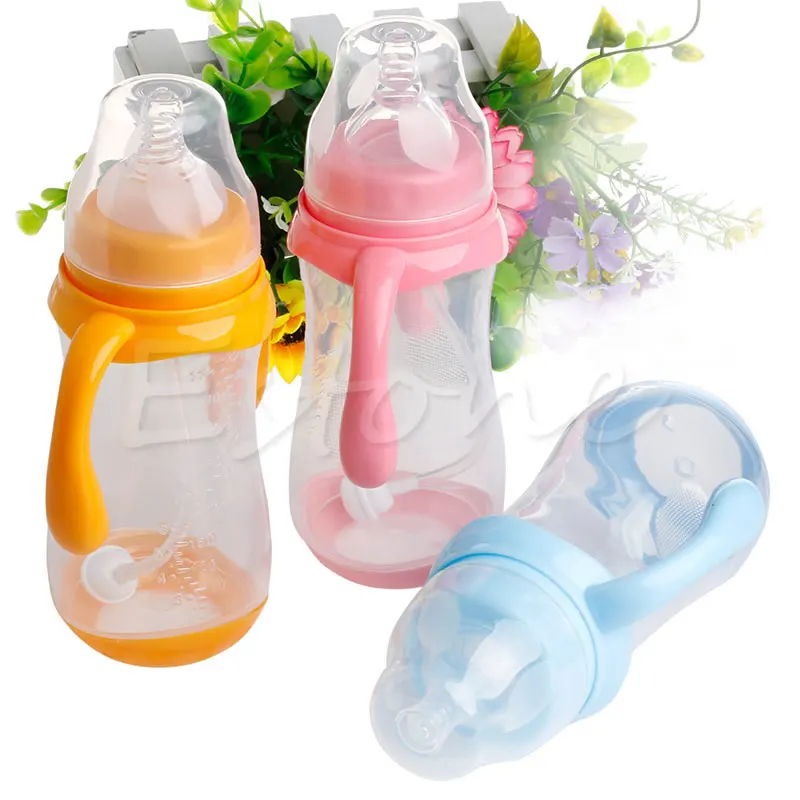Do you have to heat up baby food
How long does baby food last? Plus, how to prepare and store everything safely
You’ve perfected your little one’s favorite carrot purée recipe and nailed it when it comes to petite portion sizes, but now you’re wondering: How long does baby food last? While, unfortunately, there isn’t a one-size-fits-all rule when it comes to storing baby food — a lot of it depends on the ingredients and how it’s prepared — there are definite guidelines to follow.
In addition to baby food storage, there also are safety precautions to keep in mind when making, serving and reheating your little one’s food. (Who knew baby food could be so complicated?!) From food prep techniques that minimize the risk of foodborne illness to the proper way to refrigerate, freeze and thaw foods, here are answers to all your questions about keeping your baby’s food safe.
Are you supposed to heat up baby food?
When opening a new jar of baby food, there’s no need to heat it up. You can serve it at room temperature. However, when serving leftovers or food that’s been previously prepared and refrigerated, your little one, like you, probably doesn’t want to eat it cold. (Also, heating it up will zap bacteria. More on that in a bit.)
Is it safe to heat baby food in the microwave?
“The best way to warm up food is either in the microwave or stove,” says Natalia Stasenko, a registered dietician, child nutritionist and owner of Feeding Bytes. “If microwaving, transfer the food into a microwave-safe bowl and heat on high for about 15 seconds for every four ounces. Before serving, stir it well to make sure there aren’t any hot pockets and test it yourself.”
When reheating foods that contain meat or eggs, Stasenko recommends using the stove since the “high fat content may create overheating.”
How do you cook frozen baby food?
According to the Partnership for Food Safety Education, you should choose one of the following three ways to thaw food that’s been previously cooked and frozen:
Once food is defrosted, it should be cooked in the ways recommended above and then cooled to a lukewarm temperature before serving.
What temperature should baby food be?
Bacteria have been killed once the internal temperature reaches 165 F. The best way to ensure refrigerated or frozen food has been sufficiently reheated is to check it with a food thermometer.
Can you save leftover baby food?
Storing baby food once it’s been opened or freshly made depends on both the ingredients, as well as how it’s been prepared. Typically, store-bought food lasts a bit longer than any foods you make from scratch.
Once you open a jar of baby food, place the unused portion in the fridge quickly. According to the Food and Drug Administration (FDA), baby food that has been opened but not refrigerated should be consumed within two hours — possibly less, depending on the food.
“Fruits and vegetables may stay out a bit longer, but meat and poultry should be placed immediately in the fridge to avoid bacterial overgrowth at room temperatures,” says Dr. Sara Siddiqui, a pediatrician and clinical assistant professor in the Department of Pediatrics at NYU Langone’s Hassenfeld Children’s Hospital in New York.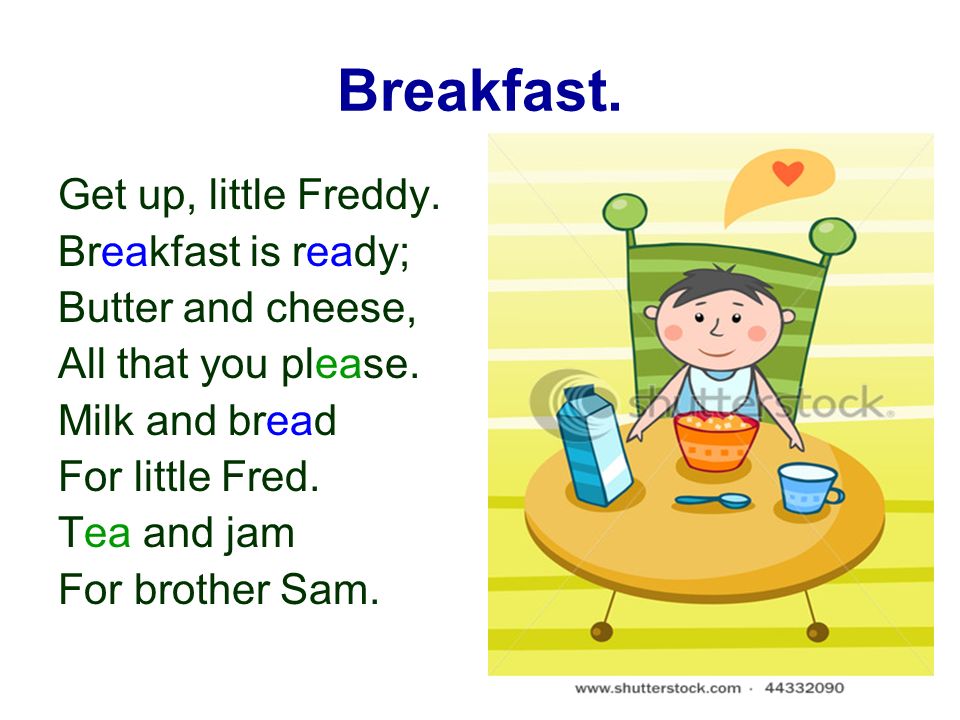
Is it OK to reheat baby food?
“Never reheat cooked food more than once,” Stasenko says. “Doing so can increase the risk of food poisoning.”
So after heating food up for your baby once, toss whatever goes uneaten, even if you didn’t serve it.
How long does baby food last in the fridge?
“Homemade baby food doesn’t last quite as long as jars and pouches from the store,” Stasenko says.
Here are some storage guidelines to follow for both store-bought and homemade baby food.
For store-bought baby food:“Generally, once opened, fruits and vegetables will last 48 hours in the fridge after opening,” says Siddiqui. “Meats, poultry and eggs should only be stored up to 24 hours.”
For homemade baby food:“Homemade baby fruits and vegetables should be used within 24 to 48 hours, storing any unused and uncontaminated portions in the refrigerator,” says Siddiqui. “Meats, poultry and eggs should be stored no longer than 24 hours. ”
”
How long does baby food last in the freezer?
Baby foods can be frozen for up to three months, says Siddiqui, when they are stored in freezer-proof containers or ice cube trays that have been covered with heavy duty plastic wrap.
What are the other basics of baby food safety?
Every parent and caregiver making, handling or serving baby food should be aware of these standard safety rules.
Keep things cleanWhether you’re making your own baby food or serving up store-bought goodness, it’s important to be sure everything — and we do mean everything — is clean for baby’s mealtime.
“Parents need to make sure all food prep surfaces, utensils, cutting boards and storage jars are clean and have been washed with hot, soapy water,” says Siddiqui. “Washing hands thoroughly and frequently during food prep and storage will reduce potential contamination, as well.”
The Partnership for Food Safety Education, a nonprofit food safety organization, also stresses the importance of having a designated spot for diaper changing, which — need we even tell you? — should never be the kitchen. And scrubbing up after a diaper change (pee or poo) should always be a nonnegotiable since — brace yourself — “hands contaminated with feces play a significant role in the spread of many bacteria and viruses that can cause food poisoning.”
And scrubbing up after a diaper change (pee or poo) should always be a nonnegotiable since — brace yourself — “hands contaminated with feces play a significant role in the spread of many bacteria and viruses that can cause food poisoning.”
If you have an older child who’s able to use utensils or pick up food on their own, make sure they clean their hands, as well. If possible, have them use warm water with soap, which has been proven to be more effective than hand sanitizers.
Beware of cross-contaminationWhile the words “fewer dishes to clean” are music to any parent’s ear, serving your baby food straight from the jar isn’t recommended.
“In order to decrease contamination from normal germs found in saliva, it is best to remove the food that’s needed and serve in a separate container,” says Siddiqui. “Afterwards, discard any food from baby’s bowl that they haven’t eaten since, again, it’s come in contact with saliva.”
On the front-end, take steps to avoid cross-contamination during food prep.
“When making your own baby food, be sure to always use a separate chopping board and knife for raw meat and poultry,” says Stasenko. “Also, keep raw meat and poultry covered and separate from other products in the fridge.”
Carefully inspectIn addition to taking care to properly prepare, store and reheat food, read labels. When using store-bought baby food, be sure to both check the expiration date and make sure the jar lid “pops” when opening it. If it doesn’t, or if you notice chipped glass or rust under the lid, the FDA advises discarding the food. For baby food pouches, make sure the seal isn’t broken.
How To Heat Up Baby Food
Now reading: How to Heat Baby Food
PrevNextSo you’re ready to introduce solid foods into your baby’s diet, you’ve researched homemade baby food recipes, and you’ve stocked up on ice cube trays and Stasher bags for storage. Now, we’re walking you through how to heat baby food safely to ensure your little one’s continued thriving. (Not sure if it’s time to start integrating baby food? We’ve got a post for that!) Figuring out how to prepare baby food to align with your baby’s nutritional needs is one thing, but learning how to store and reheat it correctly is truly just as important for your baby’s health.
(Not sure if it’s time to start integrating baby food? We’ve got a post for that!) Figuring out how to prepare baby food to align with your baby’s nutritional needs is one thing, but learning how to store and reheat it correctly is truly just as important for your baby’s health.
There are a handful of key considerations when it comes to heating or reheating baby food: namely, making sure that reheated food is piping hot to destroy harmful bacteria that could jeopardize your baby’s health, and making sure that any food cools sufficiently before serving. But in this article, you’ll also learn about the benefits of cooking in bulk, how to freeze and reheat baby food, and how to do all of this while reducing consumption of single-use packaging, like those plastic baby food pouches that inevitably end up in our landfills and oceans.
So to learn more about all things baby food – and to help create a better planet for your little one to enjoy – read on.
How Best to Heat Up Baby Food
There are two primary ways of heating up or reheating baby food: on the stovetop or in the microwave. For either method, the goal is to practice good food safety and reheat baby food super thoroughly (think: piping hot!) as to destroy bacteria that could make your baby sick.
For either method, the goal is to practice good food safety and reheat baby food super thoroughly (think: piping hot!) as to destroy bacteria that could make your baby sick.
For the stovetop method, heat up baby food directly in a hot pan or in a double boiler, stirring constantly until the food is steaming. Alternatively, you can also use a sous vide method by submerging a Stasher 1-Cup Bowl filled with the refrigerated or frozen baby food into a pot of boiling water until the food heats through.
To save time, you can use the microwave method instead. Using a microwave-safe container like a Stasher 1-Cup Bowl, heat the frozen or refrigerated baby food on high for 15-second increments. Make sure the container is covered or somehow sealed as to keep the steam in and heat the food more thoroughly.
For both methods, stir the hot baby food well to ensure that any hot spots are absorbed into the rest of the food. Then, allow to cool sufficiently before feeding it to your little one – you can test the temperature yourself to make sure! But don’t allow the baby food to sit out for an extended period of time, as this encourages bacteria growth.
Reheating Baby Food from Frozen
When reheating baby food from frozen, make sure that the food is fully thawed – and, you guessed it, piping hot. It might seem easier to heat just to room temperature and serve immediately rather than waiting for super hot food to cool. But for the sake of your baby’s health and wellbeing, follow food safety best practices and heat food thoroughly until it’s steaming and then let it cool sufficiently. Better (food) safe than sorry! ;-)
To save time, consider doling out baby food into individual portions by using an ice cube tray and then putting the tray into the freezer – baby food is safe to freeze for 3 months. Once frozen, pop the cubes out into a Stasher 8-Cup Bowl. Now, you’ll have single portions ready and waiting in the freezer! And because baby food can only be reheated once, this method reduces food waste, too.
Can You Refreeze Baby Food?
While baby food has a pretty long shelf life when it’s stored in freezer-friendly containers like Stasher bags or Stasher bowls, it can only be reheated from frozen once. That means that if you’ve heated up frozen baby food and then have leftovers, those leftovers shouldn’t be refrozen – either promptly discard them or pop them in the fridge to use within two days. The process of freezing, thawing, heating, and then refreezing food creates a more hospitable environment for harmful bacteria to grow, which can make your little one sick. This is why following proper food safety techniques is important! And this is also why we’re big fans of freezing baby food in single portions – less food to potentially waste.
That means that if you’ve heated up frozen baby food and then have leftovers, those leftovers shouldn’t be refrozen – either promptly discard them or pop them in the fridge to use within two days. The process of freezing, thawing, heating, and then refreezing food creates a more hospitable environment for harmful bacteria to grow, which can make your little one sick. This is why following proper food safety techniques is important! And this is also why we’re big fans of freezing baby food in single portions – less food to potentially waste.
How to Prepare Store Bought Baby Foods
Unlike homemade baby food, store-bought baby food can be served at room temperature if you’ve just opened a new jar. But if you’re serving up leftovers from the refrigerator or freezer, be sure to heat the baby food super thoroughly (and then let it cool thoroughly, too!) just as you would with homemade food.
And just like with homemade baby food, store-bought baby food stays fresh in the fridge once opened for two days, so discard leftovers that have been sitting in the fridge for longer than this. Likewise, if you’re opening a jar of baby food and don’t hear that satisfying pop of the lid opening – or the click of a plastic squeeze top being unscrewed – that means the jar probably wasn’t properly sealed and could be playing host to harmful bacteria. Although we’re big believers in conservation and minimizing waste, food safety and the wellbeing of your little one is important too. So if you’re not sure if food is still safe to serve, play it safe and toss it.
Likewise, if you’re opening a jar of baby food and don’t hear that satisfying pop of the lid opening – or the click of a plastic squeeze top being unscrewed – that means the jar probably wasn’t properly sealed and could be playing host to harmful bacteria. Although we’re big believers in conservation and minimizing waste, food safety and the wellbeing of your little one is important too. So if you’re not sure if food is still safe to serve, play it safe and toss it.
You can freeze store-bought baby food, but we recommend transferring it to freezer-friendly food containers first – the plastic squeeze pouches and glass jars that store-bought baby food come in were not designed to go in the freezer and can crack. And remember, whether it’s store-bought or homemade, don’t refreeze baby food if it’s already been frozen and thawed previously.
The main best-practices when it comes to heating baby food safely? Heat throughout, let those fruit purees or veggies cool sufficiently, don’t thaw baby food and then refreeze it, and discard leftovers after 2 days. Oh, and that when it comes to all things storing, heating, and serving baby food, the Stasher bowl is your new best friend.
Oh, and that when it comes to all things storing, heating, and serving baby food, the Stasher bowl is your new best friend.
Cooking baby food in the microwave. Is it possible to heat baby food in the microwave
In today's society, every fourth family uses household appliances, because they help us save time. For example, a microwave oven is an indispensable tool for young mothers. After all, it is so convenient to heat baby puree, formula or breast milk in the microwave in just a few seconds and feed the baby.
But what happens to baby food when exposed to microwaves? How does microwave food affect a child's body? These and many other questions regarding the harm and benefits of a microwave oven are of concern to many mothers. Some argue that microwaves do no harm to food, others believe that they destroy vitamins and deprive food of useful properties.
We decided to write this article after we received a letter from our regular reader who writes. ..
..
“Hello, site editors! My name is Irina. Four months ago, I became a mother. I feed my baby with breast milk, but from 6 months, I plan to introduce complementary foods in the form of mashed potatoes into the child's diet. And I had a question: is it possible to heat baby puree in the microwave or, like our grandmothers, heat everything in a water bath? It is important for me to understand whether baby food loses its beneficial properties when heated in the microwave, and whether waves affect food in a negative way?”
Is it still possible to heat baby puree in the microwave? We offer together to understand this difficult issue and, perhaps, dispel some myths. In any case, you and only you, dear mothers, decide whether to listen to our recommendations or not.
Myth #1 Microwave ovens emit radioactive waves.
This is an erroneous statement. Because the waves belong to the group of non-ionizing, and there can be no radioactive impact. They in no way affect either food or the human body as a whole.
Myth #2 Exposure to microwaves changes the molecular structure of foods and they become carcinogenic.
Fortunately, this is not true either. To make a product carcinogenic is subject only to X-ray or ionizing waves. Carcinogenic substances are also released when foods are fried in hot oil. What doesn't happen when you reheat baby puree.
Myth #3 Magnetic radiation from microwaves
In fact, we are exposed to magnetic radiation every day: televisions, computers, mobile phones, radios, etc. Microwaves are no exception. Yes, its waves are more powerful, but, due to the "smart" device of the furnace and screened grids, the radiation remains inside.
Neither the walls of the cabinet, nor the doors, nor the food placed inside are capable of accumulating electromagnetic radiation of microwaves. And as soon as the oven stops working, the microwaves disappear. Waves can harm health only with a direct impact on some part of the body.
Scientists' opinions about the dangers and benefits of microwaves
For 25 years, scientists have been studying the effects of waves on the human body. As a result of experiments, it was proved that food cooked or heated in the microwave does not lose its beneficial properties at all. And in some cases, on the contrary, it is more useful and less high-calorie, since it does not require the addition of oil when cooking, unlike food cooked in a pan.
As a result of experiments, it was proved that food cooked or heated in the microwave does not lose its beneficial properties at all. And in some cases, on the contrary, it is more useful and less high-calorie, since it does not require the addition of oil when cooking, unlike food cooked in a pan.
In addition, products retain 2-3 times more vitamins, as they are not subjected to prolonged heat treatment, and the cooking method is more like steam.
WHO has disproved the theory that microwaves are harmful to health. However, some baby food manufacturers advise against heating baby puree, formula, and milk in the microwave. Arguing that the microwave oven does not heat the food evenly. As a result, areas with high temperature are formed, which can burn the child. But you must admit that unevenly heated mashed potatoes can simply be mixed, and a child can get burned on food heated in any other way, if you do not pay enough attention to this. So this argument is probably weak.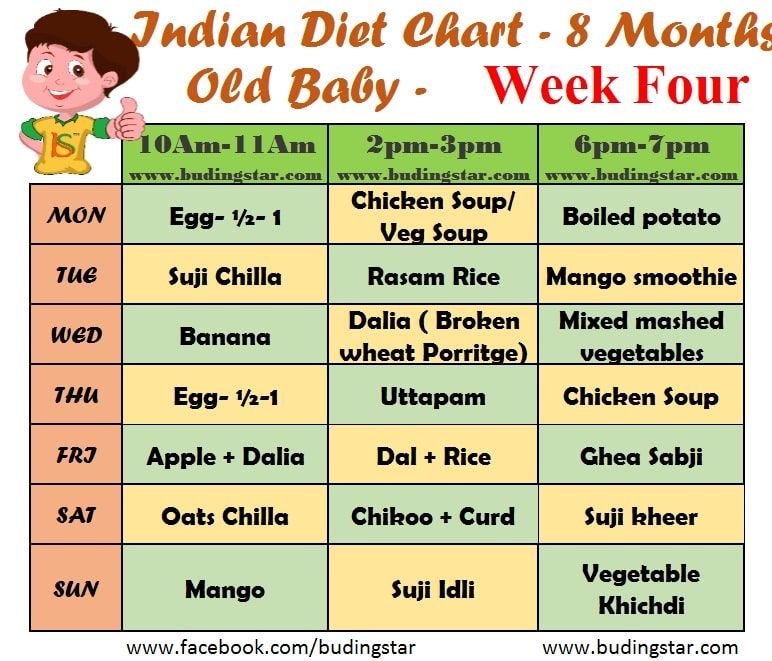
Can breastmilk be heated in the microwave?
But breast milk is not so simple. Mother's milk has unique vitamins and microelements that cannot be replaced by even the best mixture. And young mothers should know that in areas with high temperatures, the destruction of useful components, such as immunoglobulins, occurs. What makes breast milk less healthy. Therefore, mother's milk, unlike baby puree, will be better heated in a water bath.
It is convenient to reheat baby food in the microwave - it saves a lot of time. Just a couple of minutes, and the job is done: milk, porridge or mashed potatoes are warm. But mothers are worried: does food become harmful if it is heated in a microwave oven? There are so many conflicting rumors about the influence of microwaves - what is true and what is fiction?
Microwave ovens have settled in almost every kitchen, saving time for their owners, making kitchen chores easier. The operation of a microwave oven is based on the action of electromagnetic waves. Microwaves are harmful to humans, so there is debate about the usefulness of food prepared with their help. Many scientists claim that food from a microwave oven is completely safe, stories about the remnants of radiation in it are a myth. The power is too low to somehow affect the body.
Microwaves are harmful to humans, so there is debate about the usefulness of food prepared with their help. Many scientists claim that food from a microwave oven is completely safe, stories about the remnants of radiation in it are a myth. The power is too low to somehow affect the body.
Users ask if vitamins are preserved in the microwave. Yes, and there are more of them than in food prepared in the usual way. The reason is the short duration of the process. Dishes are prepared many times faster, less useful substances are destroyed. Another positive point is that you do not need to add oils and fats, so the food turns out to be dietary, almost like in a double boiler.
About breast milk
Breastfeeding mothers are wondering if breast milk can be heated in the microwave. Definitely - no! Expressed milk must not be heated with microwaves. They act on immunoglobulins and other living components, kill them or at least change their structure. You will get from the cell not priceless food, but a little useful liquid, comparable to cow's milk.
Heating of mother's milk in the microwave chamber is strictly prohibited - it is heated only in warm water, in a water bath.
Is it possible to heat artificial mixtures
If you need to warm artificial food, it is better to use the old proven method - hot water. But you can still take advantage of the microwave oven: heat water in it, in which you put milk or baby puree.
If you need to warm up a bottle of formula in a café, ask for a large cup of hot water. Put the bottle in it and heat the mixture.
What pediatricians and gastroenterologists say
Pediatricians do not advise parents to heat formula or heat milk in the microwave. In general, you should not cook food for kids in it - in any form, doctors insist. Disputes about the dangers of microwaves are ongoing, which means that it is not worth risking the health of a child. Manufacturers do not mention in the instructions for microwave ovens the possibility of using them for baby food.
Gastroenterologists are categorical in terms of breast milk: heating it with microwaves means radically changing the structure. Amino acids of L-proline are transformed into toxic d-isomers. These connections:
- interfere with kidney function;
- harm the nervous system.
Which bottles are better
Mom's formula is poured into bottles made of glass or plastic. It is recommended to use glass - they are safer. As it turned out, the plastic container contains bisphenol-A. When the plastic heats up, the phenol molecules are released and enter the contents. Animal studies have shown that after regularly eating food from heated plastic, health deteriorated. The impact on people has not been studied, but there is a risk - it is better to refuse plastic containers.
Polycarbonate dishes should not be boiled, microwaved or even washed in a dishwasher.
Take care of your baby, try to use the microwave oven only in extreme cases.
With incredible difficulty, I opened my eyes and tried to see what time it was, the luminous numbers on the electronic clock seemed blurry, and it took me time to focus my vision and see them - it's time to feed Artyomka. I slowly got up and went to the kitchen to heat up the infant formula. Then I remember everything, like in a fog, I took out the mixture, poured it into a baby bottle, added water and put it in the microwave, at that moment, without even thinking about whether it was possible to heat the baby formula in the microwave.
But I still had to look into this issue, a little later, when my mother scolded me for my indiscretion, firmly convinced that the use of a microwave oven to heat baby food is harmful and categorically unacceptable. So I wondered how it really is, is it possible to heat baby formula, breast milk, mashed potatoes and other baby food in the microwave?
Can breast milk be heated in the microwave?
It's time to admit to yourself that all the stories about the dangers of microwave ovens are a myth, and food heated in it does not harm our health. However, some products, for various reasons, are still not recommended for heating in the microwave.
However, some products, for various reasons, are still not recommended for heating in the microwave.
One such product that is not recommended for microwave heating is breast milk.
The fact is that when heated in a microwave oven, part of the immunoglobulins and vitamins, the content of which is not equal to breast milk, is destroyed. And from this, of course, mother's milk becomes less useful.
Can infant formula be heated in the microwave?
But in this question you need to pay your attention to what exactly you want to do.
If you need to heat water in the microwave and dilute infant formula in it, you can safely do it.
But it is not worth warming up the pre-prepared mixture.
And the point here is not at all in the microwave, it's just that almost all baby food manufacturers write on packages with the mixture that you need to use it immediately after preparation. Manufacturers do not recommend leaving the milk mixture for later, even if in the refrigerator, and then reheating it.
Can baby puree be heated in the microwave?
All the myths that a microwave oven emits radioactive waves, changes the molecular structure of foods and makes them carcinogenic, are complete nonsense. There is not a single confirmation of these myths, and on the contrary, all the studies conducted over the past quarter century indicate the opposite.
Therefore, I would like to assure all mothers who are worried about the health of their children - you can heat baby puree in the microwave.
The only thing I would like to remind you is that before you start feeding the baby puree heated in the microwave, it must be mixed and tasted, as the product may heat up unevenly and the baby will burn.
Can milk be heated in the microwave?
You can heat cow's milk in the microwave.
If you decide to heat cow's milk in the microwave, you can be calm, it will not bring any harm to your health. But the benefits, most likely, too. And the point here is not at all in the microwave, but in the fact that before getting to the store counter, the milk is already processed and pasteurized in the factory. And of course, it is already difficult to talk about its naturalness and usefulness after that.
And of course, it is already difficult to talk about its naturalness and usefulness after that.
It's different when it comes to breast milk that you have expressed and now decide to warm it up. Of course, this is not worth doing. About why, we already wrote in this article, a little higher.
Is it possible to heat kefir in the microwave?
If we consider the question of whether it is possible to heat kefir in the microwave, from the point of view of preserving the benefits of the product, we are convinced that this is the most important aspect in preparing food for a child.
Then the answer will be negative, heating kefir in the microwave is undesirable.
Since most beneficial microorganisms, including lactic acid and bifidobacteria, die when heated. And even such a small temperature as 38-40 degrees becomes critical for their survival. But in a microwave oven, the product heats up unevenly, and in some places the temperature reaches much higher marks.
If the preservation of the beneficial properties of kefir is not in the first place for you, then you can heat it in the microwave. At the same time, of course, it will lose some of its useful microorganisms, but still it will not become completely useless. But remember that with rapid heating, kefir can curdle. Therefore, when heating kefir in a microwave oven, you should not do it longer than 10-15 seconds. If this is not enough, you can take it out of the microwave, mix it well and put it on for another 10-15 seconds.
Can cottage cheese be heated in the microwave?
Almost all fermented milk products contain beneficial bacteria - probiotics. It is they that increase the activity of immune cells, produce antibodies against pathogenic bacteria and inhibit the growth of harmful microbes, thereby creating a balance in the intestinal microflora.
Unfortunately, when heated, probiotics die, so it is undesirable for a child to heat cottage cheese in the microwave.
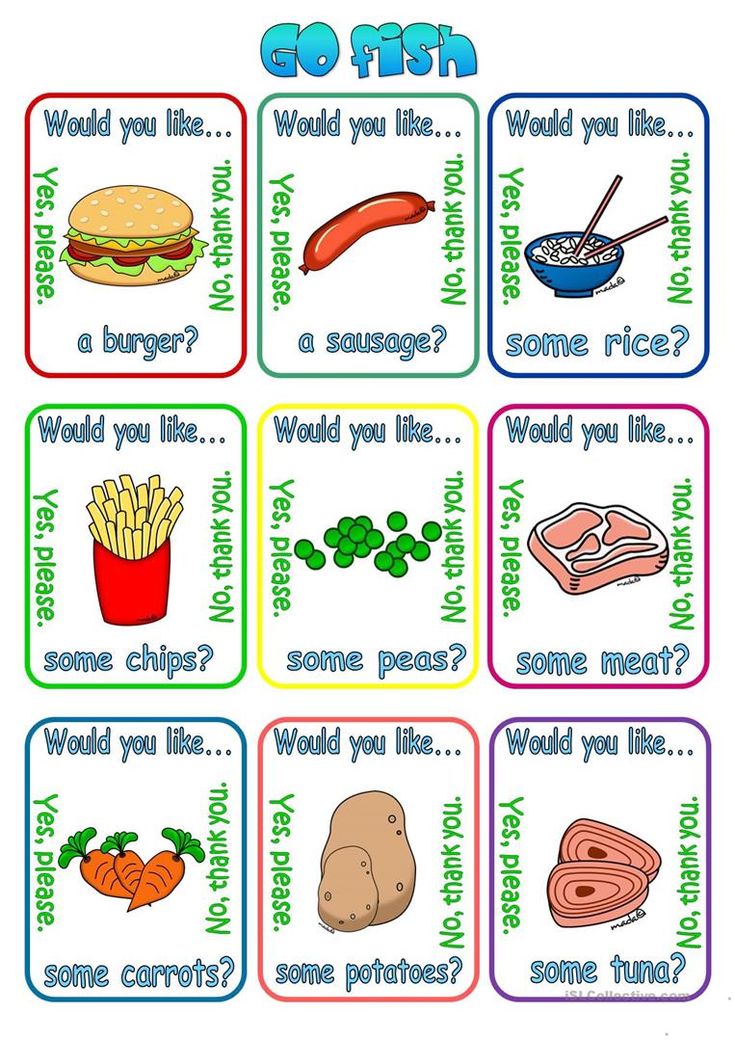
Heating cottage cheese in a microwave oven significantly reduces the beneficial properties of the product. In addition, this is not particularly necessary, because few children like cottage cheese in a warm form. It will be enough just to get the cottage cheese out of the refrigerator and let it stand for 30-40 minutes at room temperature.
Can yogurt be heated in the microwave?
However, like kefir, cottage cheese, and any other fermented milk products. We already wrote about this a little higher - it's all about beneficial bacteria that die when exposed to high temperatures.
If you do decide to use the microwave to warm up the yogurt, remember to remove the foil cap from the packaging. Foil is essentially a thin layer of metal, and the use of metal objects in a microwave oven is not acceptable, and may cause damage to it.
Can I heat a baby bottle in the microwave?
Well, we sort of figured out which foods can be heated in the microwave and which can't.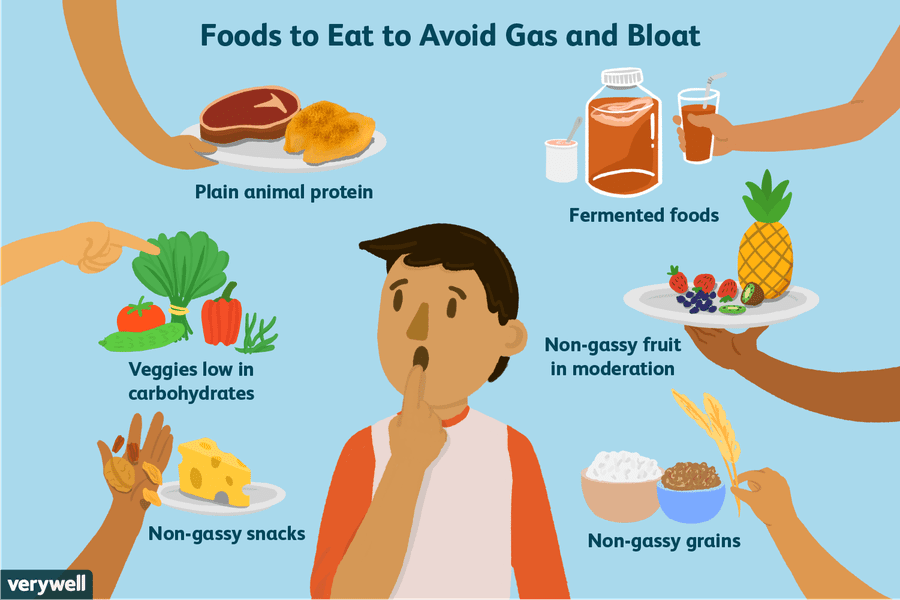 But any mother, sooner or later, will have a question, is it possible to heat food for a child right in a baby bottle? Unfortunately, there is no unequivocal answer to this question, here you need to proceed from the manufacturer's recommendations indicated on the package.
But any mother, sooner or later, will have a question, is it possible to heat food for a child right in a baby bottle? Unfortunately, there is no unequivocal answer to this question, here you need to proceed from the manufacturer's recommendations indicated on the package.
But I want to assure you that in our time, most manufacturers of baby bottles use only high-quality materials and plastics that are allowed to be heated in the microwave.
It is worth paying attention to this even at the time of purchase, it will save you from unnecessary problems in the near future and make life much easier.
Can I heat baby food in the microwave?
Wow, this is just warming up - as other authors write in the answers. This is not heating, this is an acceleration of the movement of water molecules that rub against each other, hence heat arises. But water changes its structure. Then all this in the children's body. This is undesirable even for adults.
For a small child, it is better to prepare fresh formula rather than reheating old formula. But if there is no time to prepare a new mixture, then you can also heat up the old one, but it’s better to heat it in a water bath on the stove, and not in the microwave, because excessive electromagnetic fields are harmful even to adults, and not just to a small child. Now they write a lot about the dangers of microwaves and cell phones and computers - all these devices should be in our lives, but dosed so that the harmful effect of the electromagnetic field is not every second - you need to give the body a rest from increased electromagnetic influences.
But if there is no time to prepare a new mixture, then you can also heat up the old one, but it’s better to heat it in a water bath on the stove, and not in the microwave, because excessive electromagnetic fields are harmful even to adults, and not just to a small child. Now they write a lot about the dangers of microwaves and cell phones and computers - all these devices should be in our lives, but dosed so that the harmful effect of the electromagnetic field is not every second - you need to give the body a rest from increased electromagnetic influences.
If you mean milk mixtures, then you can’t leave them even for 30 minutes after eating. If this is how you prepare the mixture, then it is better to heat water in the microwave and pour your mixture already warm. Well, if these are porridge-soups for an already independent little man from 1 year and older, then why not. In any case, this is how I often warm up food for my sons. And if you are afraid of radiation, then against the background of all mobile, television and other from existing household appliances, these are not such strong rays.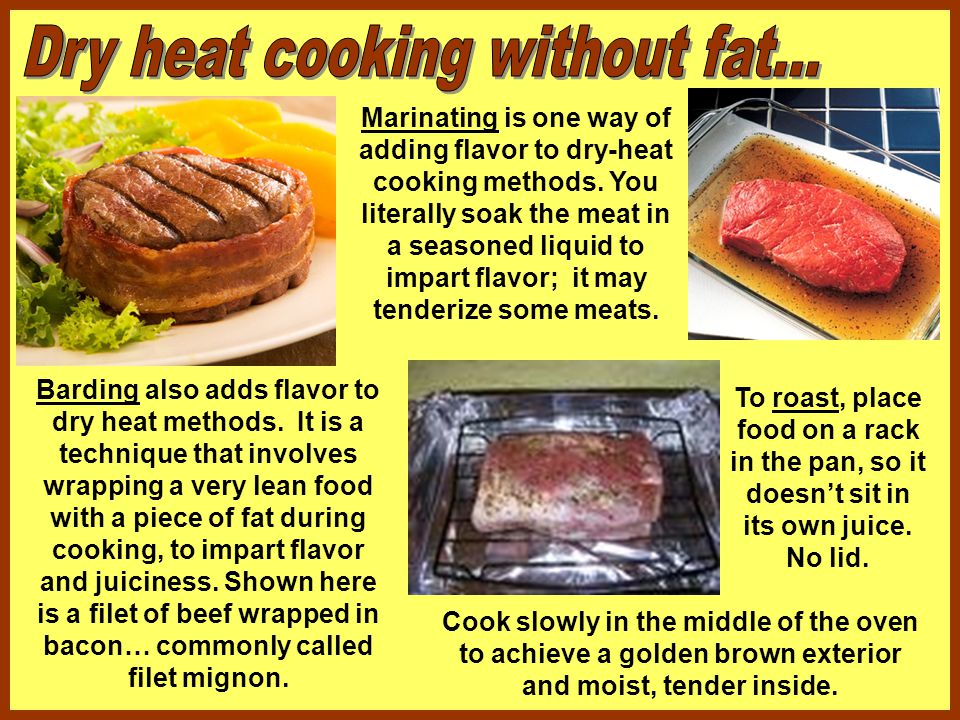
If you do decide to heat the reconstituted formula in the microwave, shake the bottle well to evenly distribute the heat so that the baby does not burn.
Possible. Microwave is the usual heating, that is, the transfer of heat to the product. Its peculiarity consists only in the fact that heating occurs immediately throughout the entire volume, and not from contact with a hot surface.
Also keep in mind that in the microwave you should not heat plastic dishes too much (except for special children's dishes), because. when heated, harmful substances can be released from it (after all, you don’t put plastic on the stove). It is better to use ceramics or glass.
Finally, keep in mind that uneven heating of especially thick food (like porridge) is possible in the microwave, so it is better to mix it after heating and shake the liquid.
No need to believe any myths about the dangers of microwaves, they are spread by incompetent people and alarmists.
How to warm up infant formula
— Polina Alexandrovna, is it possible to warm up infant formula — what do doctors and manufacturers say?
- General recommendations do not prohibit heating the mixture. Another question is how and why to do it. Mixtures that are sold ready-made are naturally heated. Dry mixtures must be diluted with water of the required temperature, and the need for heating in this case is lost.
— And if the situation forces you to prepare the formula in advance, what should mom do?
- It is theoretically possible to heat infant formula that has been diluted in water and not used for a certain time. But this moment must be avoided. Fresh meals can be prepared just before the baby is fed, using separate containers with a powder dispenser and a thermos of water hot enough to cool down to the right temperature by the time the formula is diluted. When traveling by car, it makes sense to use mobile water bottle warmers, they are often powered by a car cigarette lighter.
— Is it true that some mixtures can be heated while others cannot?
— It is possible and necessary to warm up ready-made liquid mixtures, which are sold in Tetra Pak packages. In another way, it is simply impossible, the child will not eat a cold mixture. On dry milk mixtures there are no markings with contraindications for warming up. However, it is illogical to dilute the mixture with cold water and then heat it up - it is initially poorly bred in cold water. It is better to dilute the dry mixture with water at the temperature recommended by the manufacturer.
— Can infant formula be heated in the microwave?
- Microwave does not destroy any elements of the mixture. But there are pitfalls that are not immediately noticeable. In the microwave, the mixture heats up unevenly, and very hot spots can form locally. Accordingly, if the temperature rises excessively, proteins can coagulate or certain nutrients can be destroyed. No one can guarantee what will happen in a particular microwave oven - they all have different capacities and configurations.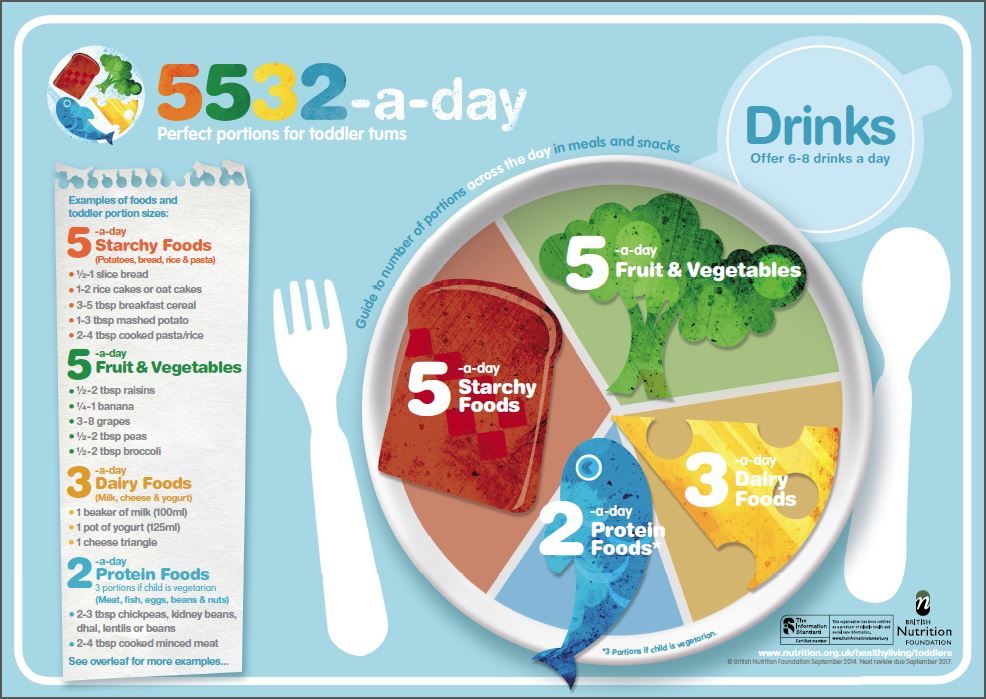
— Then what is the best way to warm up infant formula?
— To ensure that the mixture is heated correctly, a water bath should ideally be used. Even in the instructions of the manufacturers of ready-to-use liquid mixtures, heating is recommended in a water bath.
— Polina Aleksandrovna, is it possible to reheat infant formula?
- Reheating is not recommended. If the prepared mixture was heated and it cooled down again, it is better to dilute a fresh portion.
Read also
- answers to other frequently asked questions about formulas
- How long does reconstituted infant formula keep in the refrigerator?
- It is not recommended to store the mixture in cooked form: diluted - fed the child. Yes, there are extreme situations when it is impossible otherwise: there was no mixture at hand, this was the last portion ... But storing the diluted mixture at room temperature is prohibited, and even in the refrigerator they keep it - at the peril and risk of parents - no more than 1 -2 hours. And obviously it is not necessary to store the diluted mixture more than the child can consume at a time. A mixture that the child has not finished eating should not be stored under any circumstances.
And obviously it is not necessary to store the diluted mixture more than the child can consume at a time. A mixture that the child has not finished eating should not be stored under any circumstances.
- What are the requirements for the reconstituted bottle?
- Sterile - the main requirement: the bottle must contain a mixture that the child has not yet consumed. The dishes must be hermetically sealed, excluding contact with air and the environment.
It is not recommended to store diluted infant formula, so there is no special need to warm up dry milk formula. If it is not possible to feed the baby at home, then it is better to take a thermos of hot water and a container of dry formula with you and dilute a portion of the mixture just before feeding the baby.
* Breast milk is the best food for babies. WHO recommends exclusive breastfeeding for the first 6 months of a child's life and continued breastfeeding after complementary foods are introduced until the age of 2 years.






